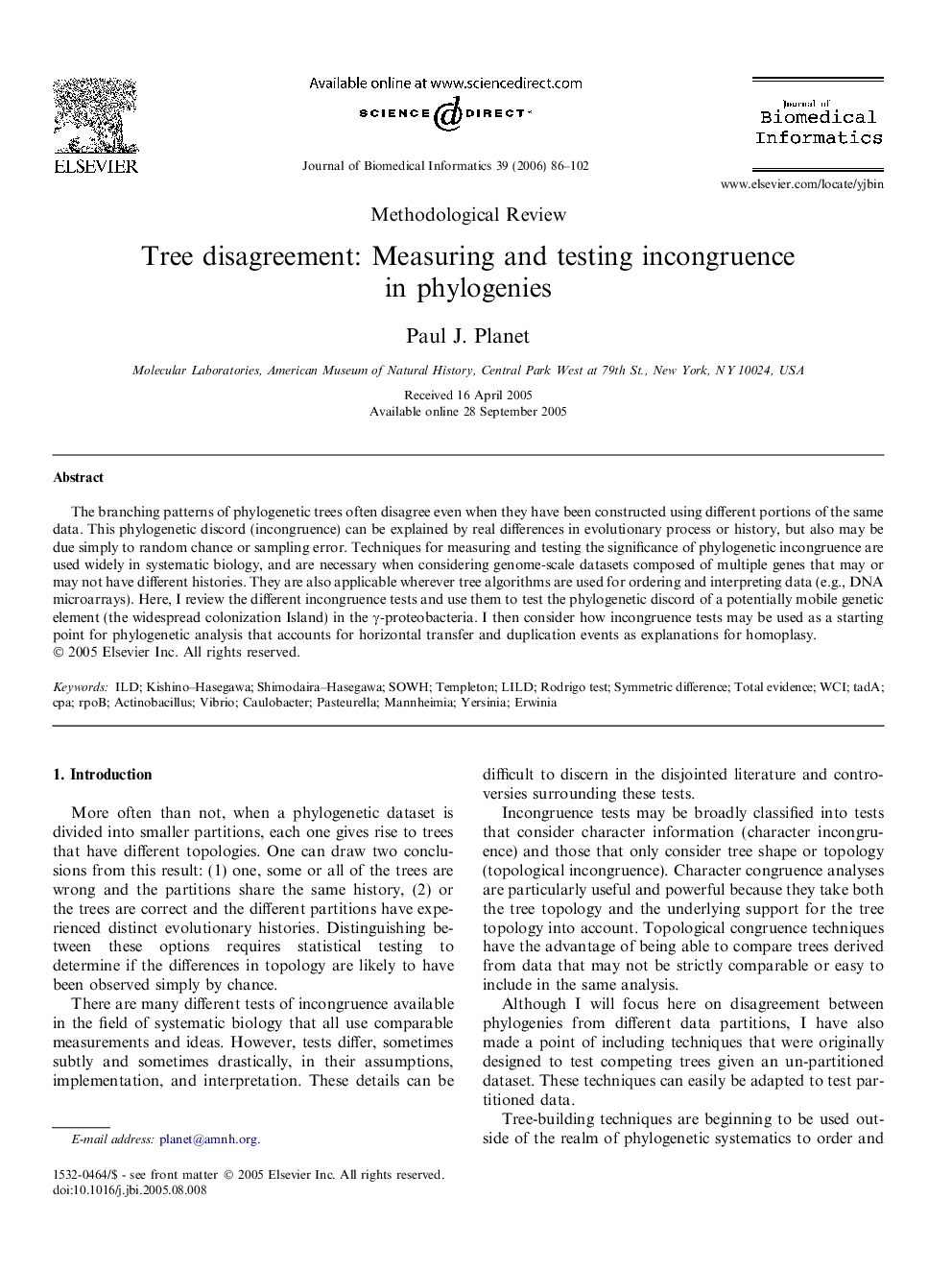| Article ID | Journal | Published Year | Pages | File Type |
|---|---|---|---|---|
| 517959 | Journal of Biomedical Informatics | 2006 | 17 Pages |
The branching patterns of phylogenetic trees often disagree even when they have been constructed using different portions of the same data. This phylogenetic discord (incongruence) can be explained by real differences in evolutionary process or history, but also may be due simply to random chance or sampling error. Techniques for measuring and testing the significance of phylogenetic incongruence are used widely in systematic biology, and are necessary when considering genome-scale datasets composed of multiple genes that may or may not have different histories. They are also applicable wherever tree algorithms are used for ordering and interpreting data (e.g., DNA microarrays). Here, I review the different incongruence tests and use them to test the phylogenetic discord of a potentially mobile genetic element (the widespread colonization Island) in the γ-proteobacteria. I then consider how incongruence tests may be used as a starting point for phylogenetic analysis that accounts for horizontal transfer and duplication events as explanations for homoplasy.
